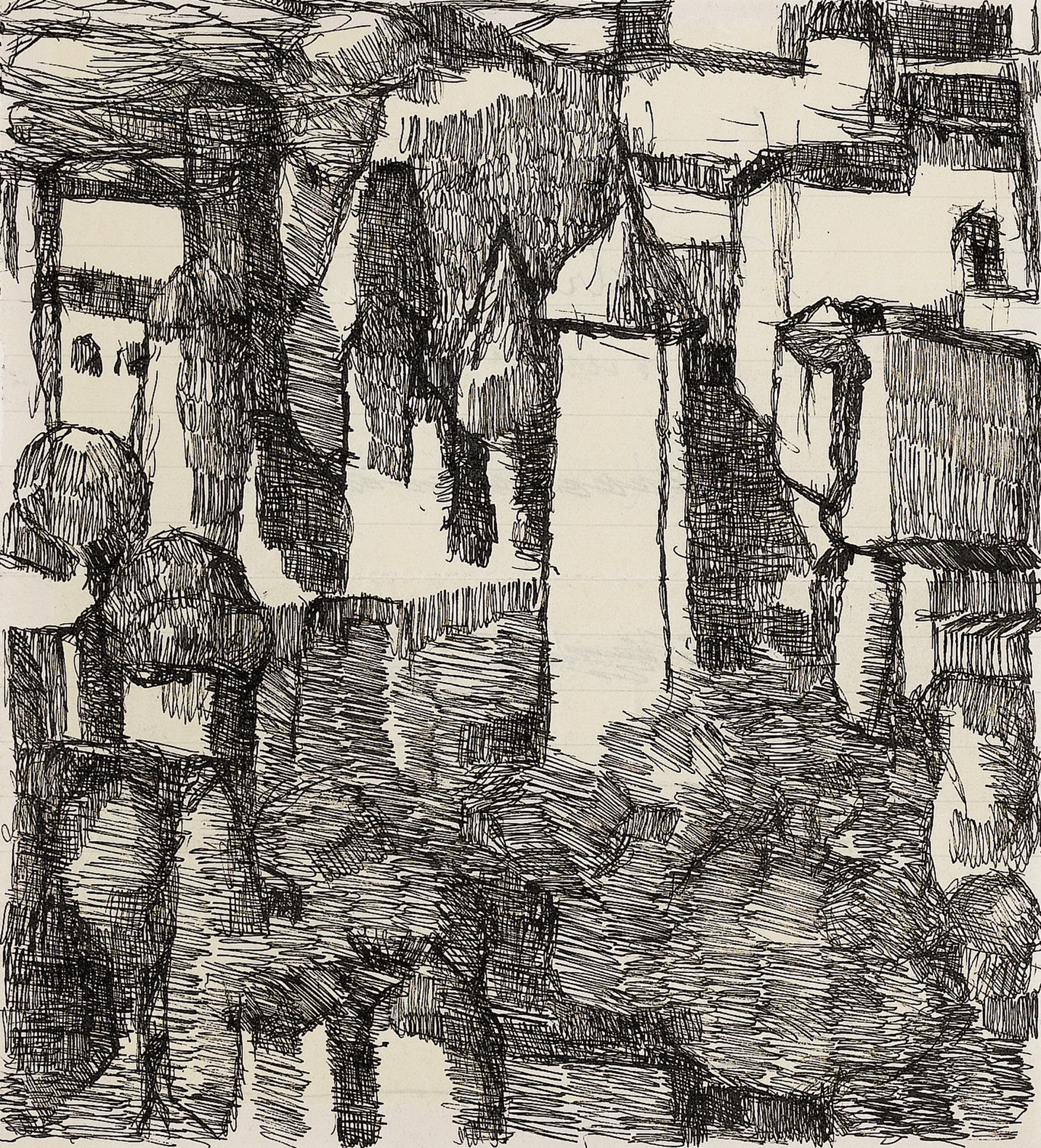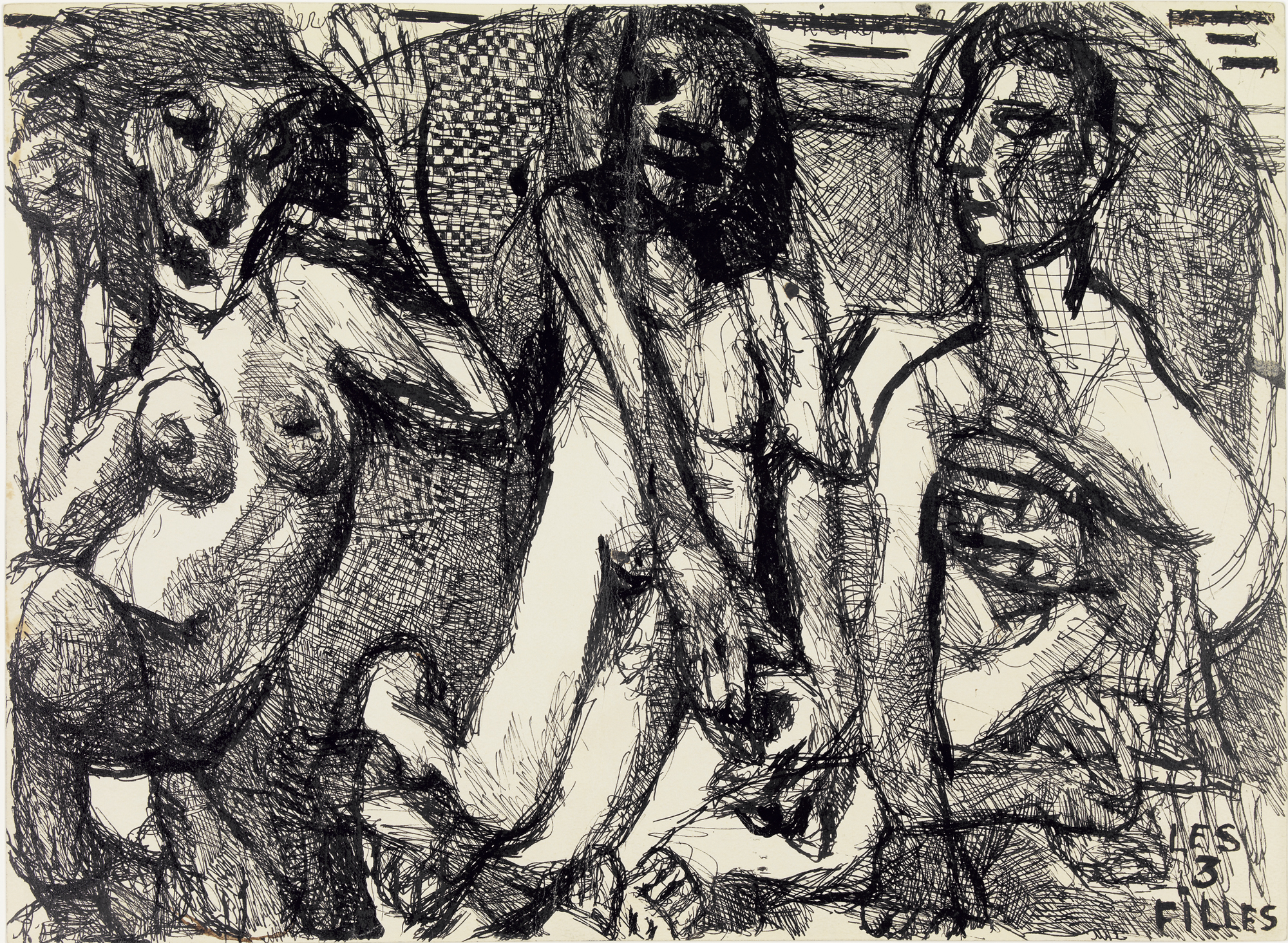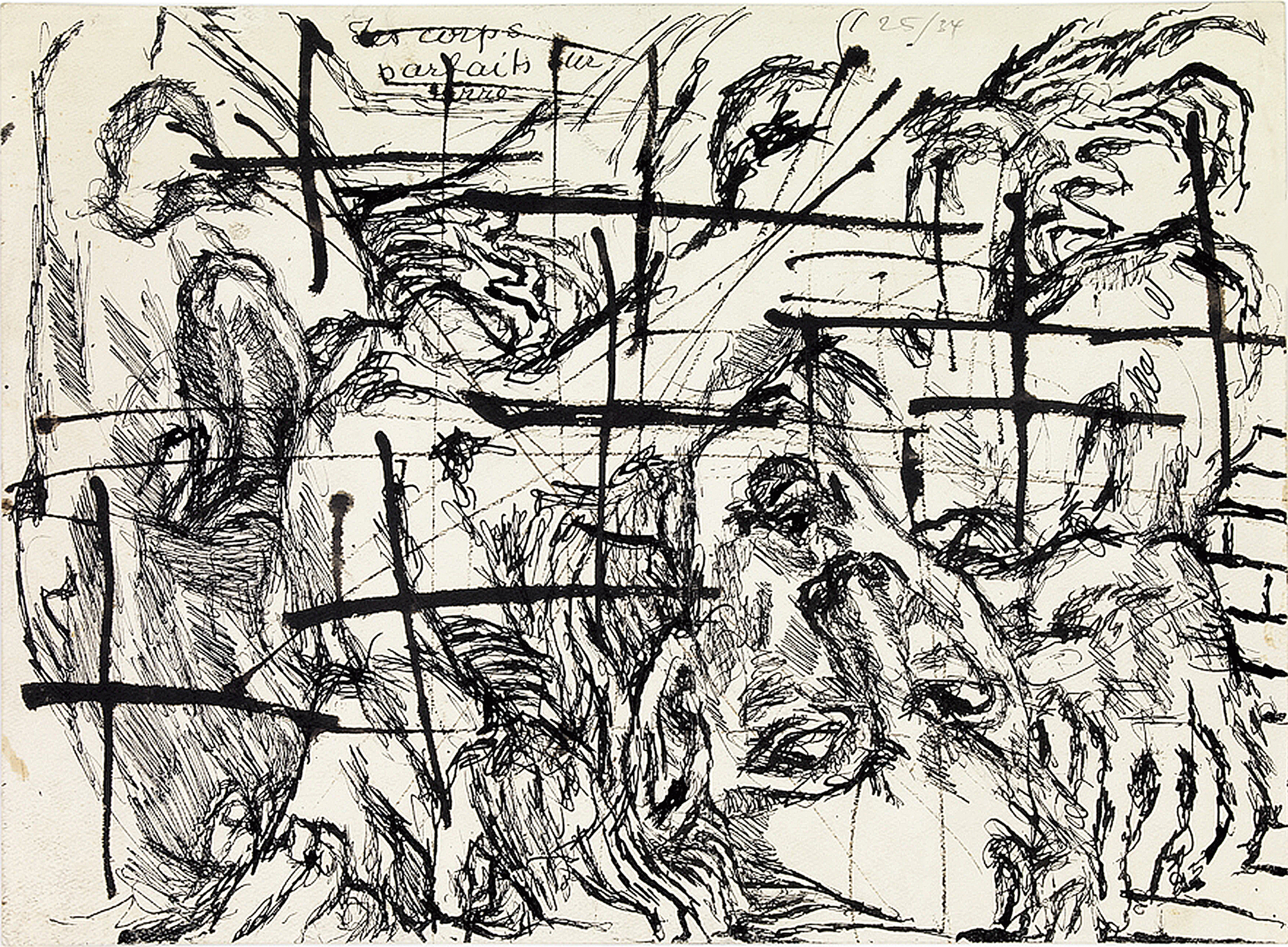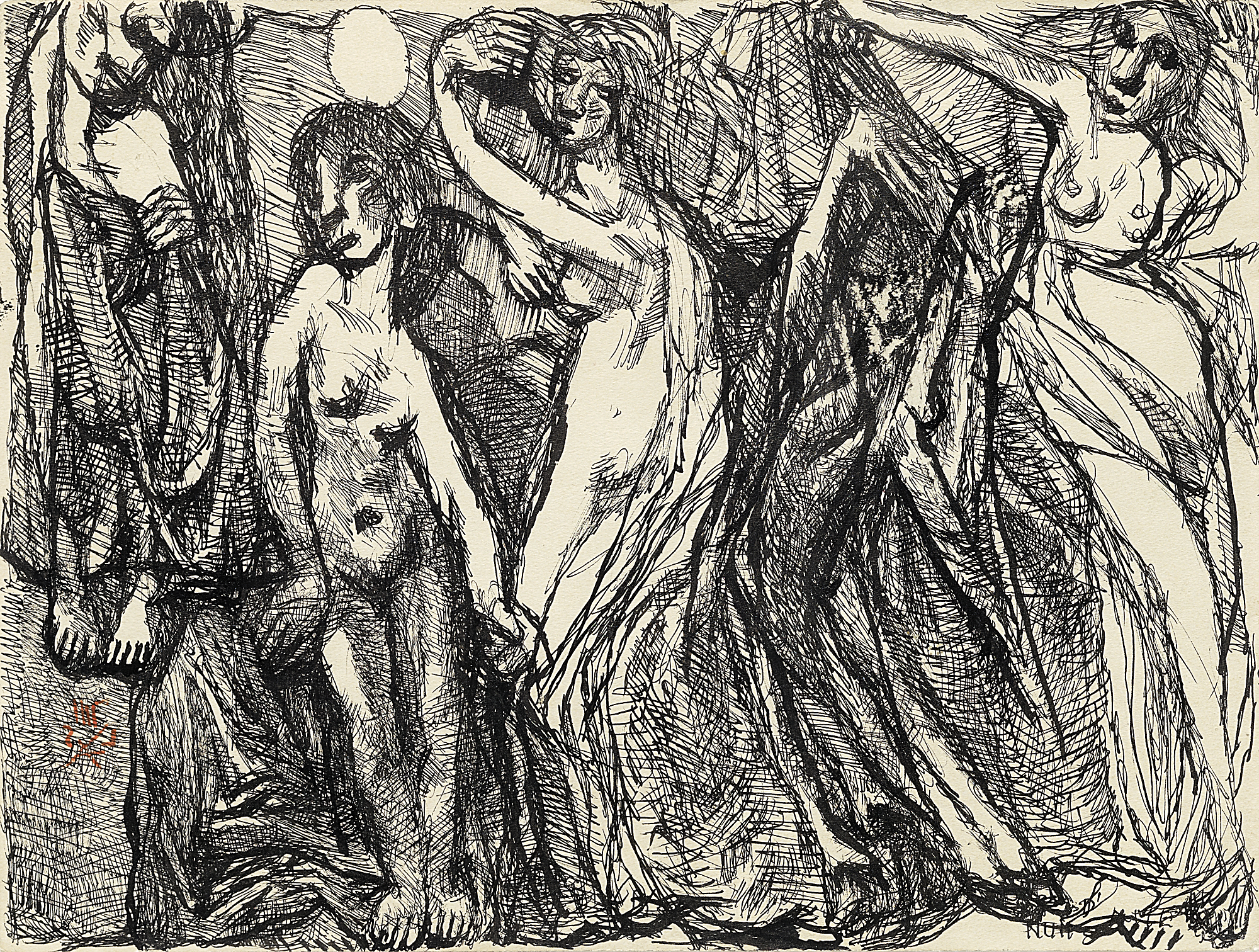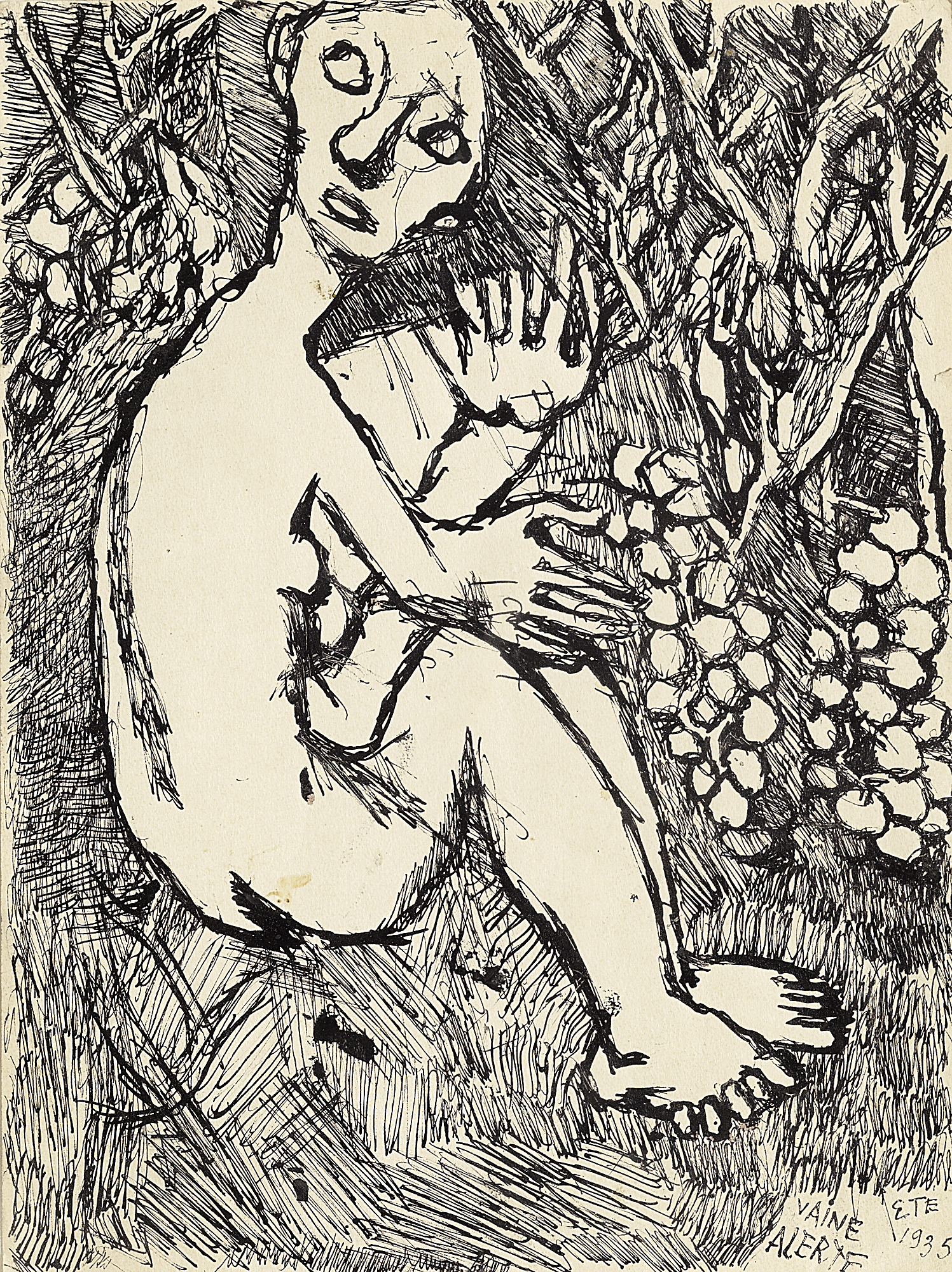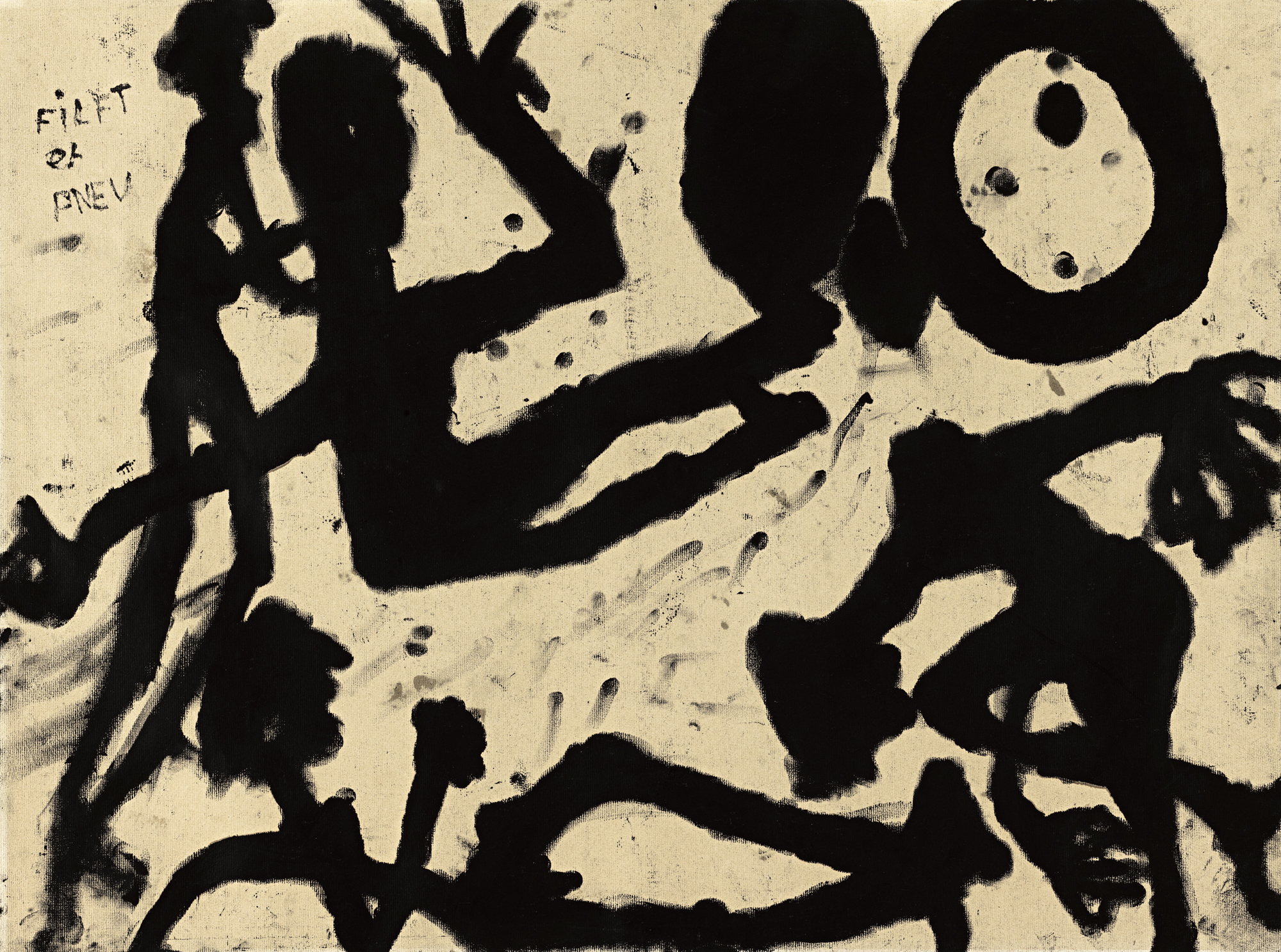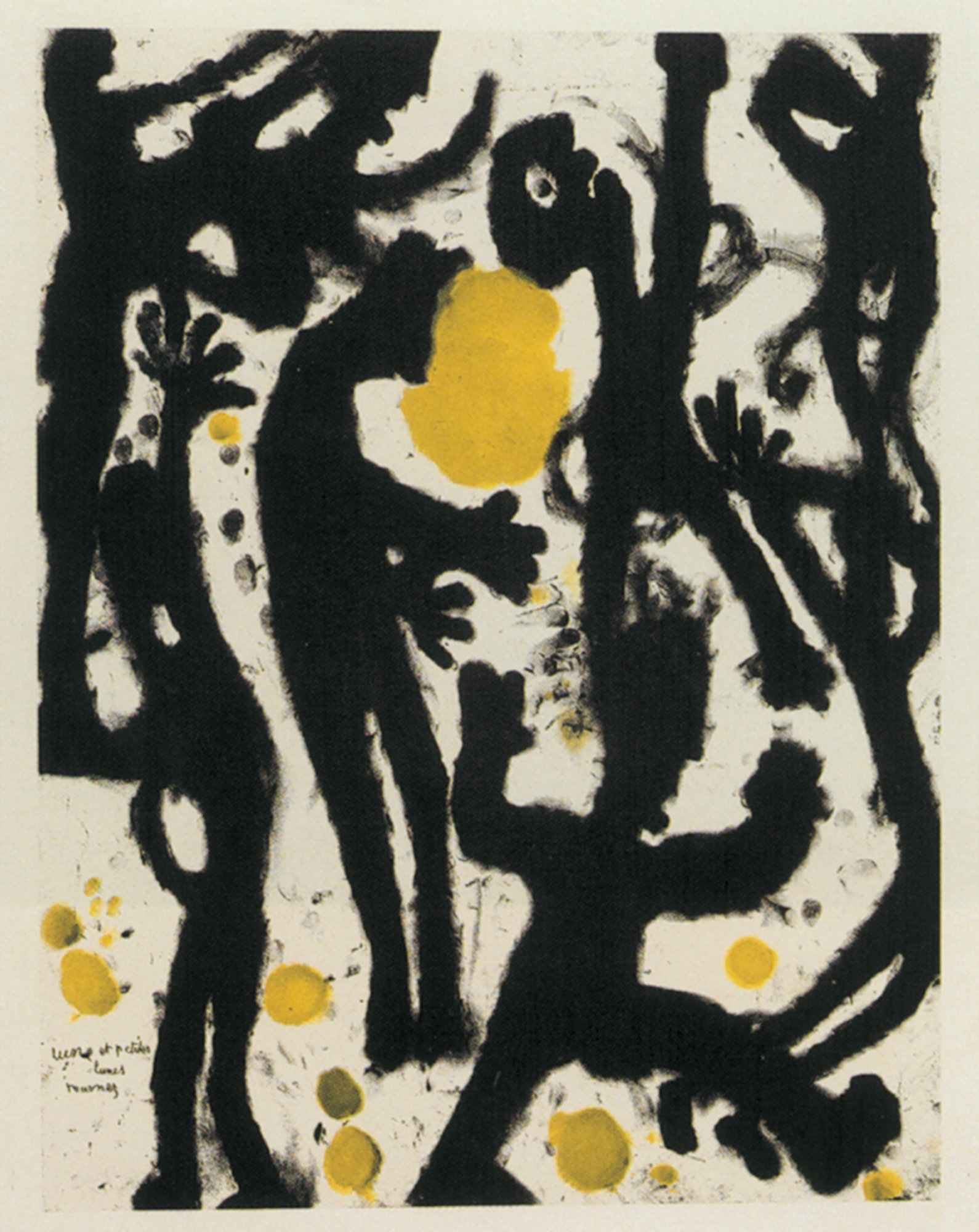Between 1923 and 1942 Louis Soutter, a singular practitioner of drawing and painting, realised over 2800 works in a unique genre, an output that goes beyond all the major trends of 20th century art history.
Born in 1871 in Morges, along the shores of Lake Geneva in the canton of Vaud, he studies architecture before training as a violinist at the Conservatory in Brussels. In 1895 he begins studying drawing and painting at the studio of Léon Gaud in Geneva and later in Paris. In 1897 he emigrates to the United States and, with his wife, settles in Colorado Springs, where he teaches music and drawing. He quickly becomes the director of the department of fine arts at Colorado College. In 1903 Soutter’s wife leaves him and the artist returns, ill and alone, to Switzerland. In the following years, he works as a violinist in the symphony orchestras of Lausanne and Geneva, and later in hotels and cinemas, where he accompanies silent films. He then begins an existence as an eccentric and unusually elegant vagabond.
Placed by his family under state guardianship, he is committed against his will to a home for the elderly in Ballaigues, in the Jura region of Vaud. There he will spend the last seventeen years of his life. It is especially in light of these conditions of involuntary confinement that his output is linked with Art Brut nowadays. Yet it is impossible to reduce his art to that denomination alone.
Unlike the artists associated with Art Brut, Soutter is fully conscious of the art of both his contemporaries and the past. Whilst practicing figuration, he points the way to Tachisme and postwar informal art. Except for a few shows at Galerie Vallotton and in the United States, as well as a publication in the review Minotaure in 1936, Soutter’s art, a private and secret body of work, will remain practically unknown in his lifetime. He will be revealed to the general public for the first time during a 1974-75 travelling retrospective in Germany and Switzerland. His work is conserved in numerous public collections, including the Aargauer Kunsthaus, Kunsthaus Zürich, Musée cantonal des beaux-arts de Lausanne, Kunstmuseum Basel, the Centre Georges-Pompidou in Paris and New York’s Museum of Modern Art.
Born in 1871 in Morges, along the shores of Lake Geneva in the canton of Vaud, he studies architecture before training as a violinist at the Conservatory in Brussels. In 1895 he begins studying drawing and painting at the studio of Léon Gaud in Geneva and later in Paris. In 1897 he emigrates to the United States and, with his wife, settles in Colorado Springs, where he teaches music and drawing. He quickly becomes the director of the department of fine arts at Colorado College. In 1903 Soutter’s wife leaves him and the artist returns, ill and alone, to Switzerland. In the following years, he works as a violinist in the symphony orchestras of Lausanne and Geneva, and later in hotels and cinemas, where he accompanies silent films. He then begins an existence as an eccentric and unusually elegant vagabond.
Placed by his family under state guardianship, he is committed against his will to a home for the elderly in Ballaigues, in the Jura region of Vaud. There he will spend the last seventeen years of his life. It is especially in light of these conditions of involuntary confinement that his output is linked with Art Brut nowadays. Yet it is impossible to reduce his art to that denomination alone.
Unlike the artists associated with Art Brut, Soutter is fully conscious of the art of both his contemporaries and the past. Whilst practicing figuration, he points the way to Tachisme and postwar informal art. Except for a few shows at Galerie Vallotton and in the United States, as well as a publication in the review Minotaure in 1936, Soutter’s art, a private and secret body of work, will remain practically unknown in his lifetime. He will be revealed to the general public for the first time during a 1974-75 travelling retrospective in Germany and Switzerland. His work is conserved in numerous public collections, including the Aargauer Kunsthaus, Kunsthaus Zürich, Musée cantonal des beaux-arts de Lausanne, Kunstmuseum Basel, the Centre Georges-Pompidou in Paris and New York’s Museum of Modern Art.
